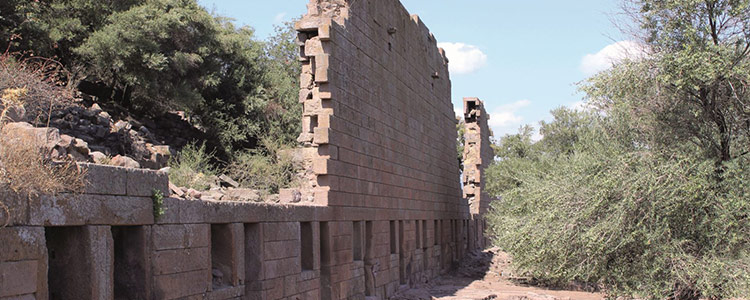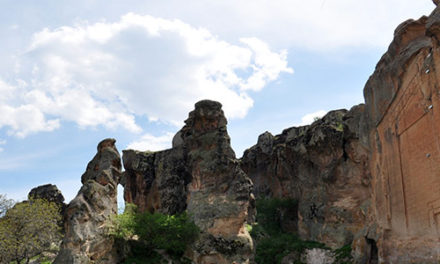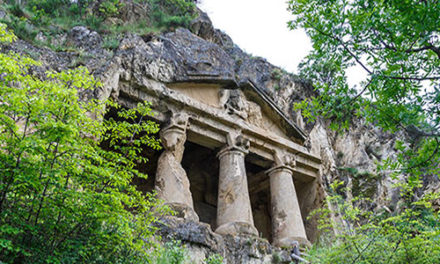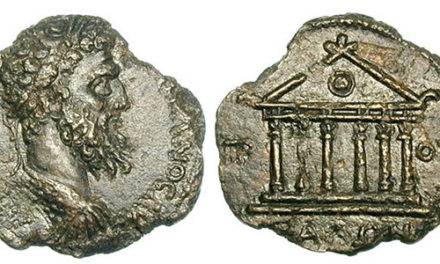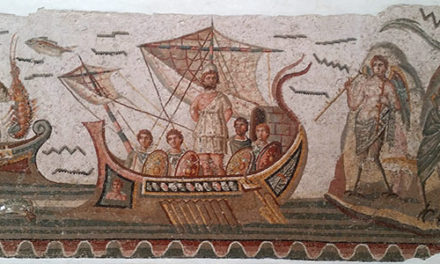Aeolis (Αιολίς)
Location: Western Anatolia
State existed: 8-6th c. BC (as Dodecapolis)
Language: Aeolic Greek
Biggest city: Smyrna
Roman province: Asia
 Aeolis (Ancient Greek Αιολίς Aiolís) or Aeolia (pronounced /iːˈoʊli.ə/) (Ancient
Aeolis (Ancient Greek Αιολίς Aiolís) or Aeolia (pronounced /iːˈoʊli.ə/) (Ancient
Greek Αιολία Aiolía) was an ancient district on the western coast of Asia Minor. It extended along the Aegean Sea from the entrance of the Hellespont (now the Dardanelles) south to the Hermus River (now the Gediz River).that comprised the west and northwestern region of Asia Minor, mostly along the coast, and also several offshore islands (particularly Lesbos), where the Aeolian Greek city-states were located. Aeolis incorporated the southern parts of Mysia which bounded it to the north, Ionia to the south, and Lydia to the east.
Aeolis was named for the Aeolians, some of whom migrated there fromGreece before 1000 BC. Aeolis was, however, an ethnological and linguistic enclave rather than a geographical unit. The district often was considered part of the larger northwest region of Mysia.
According to Homer’s description, Odysseus, after his stay with the Cyclopes, reached the island of Aeolus, who provided him with the west wind Zephyr.
The original Aeolian city was Smyrna. It was on the west coast of Anatolia that the early Greek settlers known as the Aeolians chose to start their new lives after migrating from the Greek mainland. They are thought to have come from the eastern part of Greece, north of Attica. They moved to the north of Smyrna around the mouth of the Gediz River as well as on the island of Lesbos. The Aeolians later made the city of Kyme their capital and went inland as far as the Hermes River where Magnesia was located.
These people were the first to immigrate from Greece into Anatolia. They did so probably for economic reasons, the barren country of Greece at that time being insufficient to support a growing population. They were followed by the Ionians, who took over the city of Smyrna. Legend has it that the descendants of Agamemnon founded Aeolis, or Aeolia. Herodotus wrote that (by the 8th century BC),there were twelve major Aeolian cities. These were: Lesbos, Pitane, Elaea, Gryneium, Myrina, Aigai, Kyme. Neonteichos, Temnos, Larisa, Magnesia, and, originally, Smyrna.
The Aeolians were engaged chiefly in agriculture for their livelihood since the area they chose to settle was one of the most fertile areas of Anatolia. Several of the Aeolian cities were known as cities at learning, culture and the arts. At Pitane,Aeolian works dating to the 7th century B.C. have been uncovered, and numerous well-preserved examples of Aeolian pottery have been found. Many of these are on display at the Archaeological Museum of Istanbul. Little remains from the ancient capital of Kyme, which is of interest to visitors. Some excellent architectural fragments from the archaic period have been recovered at Larisa. These are now, for the most part, in the Archaeological museum in Izmir. The Aeolians did not figure much in the history-making process of early Greek Anatolia. They kept to their territory after the initial incursion into the region, without striving to push their boundaries outward
The most celebrated one of the cities was Smyrna (modern Izmir, Turkey), but in 699 BC, and became a part of an Ionian confederacy. The remaining cities were conquered by Croesus, king of Lydia (reigned 560-546 BC). Later they were held successively by the Persians, Macedonians, Seleucids, and Pergamenes. Attalus III, the last king of Pergamum, bequeathed Aeolis to Rome in 133 BC. Shortly afterward, it was made part of the Roman province of Asia. At the partition of the Roman Empire (395 AD), Aeolis was assigned to the East Roman (Byzantine) empire and remained under Byzantine rule until the early 15th century, when the Ottoman Turks occupied the area.
AEGAE:
Aegae is mentioned by both Herodotus and Strabo as being a member of the Aeolian dodecapolis. It was also an important sanctuary of Apollo. Aegae had its brightest period under the Attalid dynasty that ruled from nearby Pergamon in the 3rd and 2nd century BC.
The archaeological site of Aegae is situated at a rather high altitude almost on top of the Mount Gun (Dağı), part of the mountain chain of Yunt (Dagları). It is in western Anatolia, in the modern village of Yuntdagı Koseler, in Manisa district. It is more readily accessible from İzmir. The successful excavations in the site keeps unearthing valuable remnants about the Aeol Civilisation.
KEY SITES: Cyme (also called Phriconis), Larissae, Neonteichos, Temnus, Cilla, Notion, Aegiroessa, Pitane, Aegae, Myrina, Gryneia, and Smyrna

